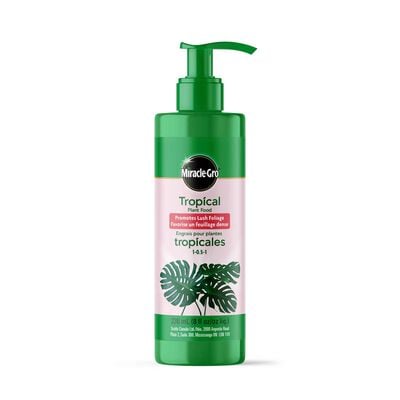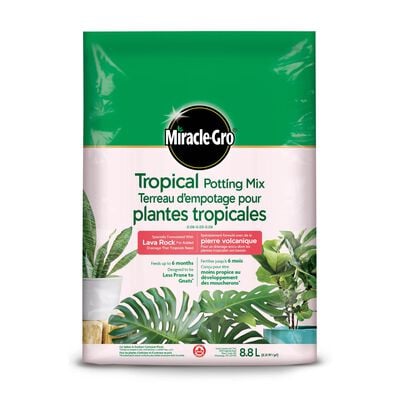
How to Grow Palms Indoors
- Choose a palm variety that grows well indoors.
- Place palms in bright, indirect light.
- Plant them in Miracle-Gro® Tropical Potting Mix
- Water palms when the top inch of soil is dry.
- After a month, feed them with Miracle-Gro® Tropcal Plant Food.
- Prune dead foliage to keep palms looking beautiful.
Did you know that palm trees aren't actually trees? They're basically giant grasses! That's why, once they've done a bit of initial growing, they'll certainly continue to get taller but won't get much wider. Plant trivia aside, palms are fantastic houseplants, since most varieties are easy to grow and all types lend a tropical flair to just about any room.
Here's what you need to know to grow palms indoors.
Which Palms to Grow Indoors
One of the best indoor palms is the parlor palm. It's pretty slow growing, but almost ridiculously easy to care for. It needs less light than many other types, so you can enjoy it just about anywhere in the house—other than a closet, of course! Sentry palms, lady palms, and Chinese fan palms are also good choices for indoor growing.
Where to Grow Palms Indoors
Indoors, most palms like evenly moist soil and bright, indirect light. Growing near a west- or south-facing window (but not where the sunbeams will directly hit the plants) is a great choice. Palms grow best with a bit of humidity in the air, too, and away from cold blasts of air from doorways or drafty windows, or hot, dry air from heating vents.
How to Plant Palms Indoors
- Use a pot no more than 1-2” larger than the root ball of your plant. Make sure it has drainage holes.
- Fill the pot ⅓ full with Miracle-Gro® Tropical Potting Mix — formulated to feed tropical plants up to 6 months. Place the plant with the root ball an inch below the rim, fill with soil, and water well.
- Water whenever the top inch of soil feels dry, and feed with Miracle-Gro® Tropical Plant Food once per week during spring and summer to promote lush foliage.
- Fill in around the root ball, making sure the "root initiation zone" (the area where the roots grow out of the bottom of the stem) is covered with soil but not buried deeply.
- Place a saucer under the pot and find a good spot for the plant.
- Water well.
How to Water Palms Indoors
Palms are the Goldilocks of plants—they like soil that's not too moist, not too dry, but just right. Once they're established, water indoor palms when the top inch of soil is dry. If you let the soil dry out completely, the leaf tips will begin to turn brown, and they won't green up again. But don't let palms sit in saucers of standing water, either, as that is a sure path to root rot.
In general, if the tips of palm leaves are turning brown, water the plants more frequently. If the leaves are turning yellow, cut back on watering.
How to Feed Palms Indoors
About a month after planting, your palm will need to be fed. Indoor palms can be picky about what's for dinner, so give them something they'll be sure to love: Miracle-Gro® Tropcal Plant Food. This has all of the nutrients palms need, including magnesium, iron, and manganese to help prevent fronds from yellowing and curling. Plus, it will keep your palms well-fed for up to 3 months. Be sure to follow all of the directions on the label.
How to Prune Palms Indoors
While you really can't prune palm trees for size—if you cut off the top of the plant, it's toast—you can prune off dead leaves to keep the plant tidy. Know, though, that many species have spines and pointy leaves that will poke you if you're not careful.

